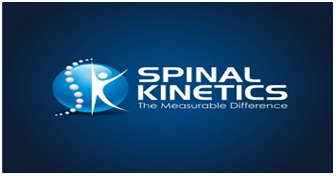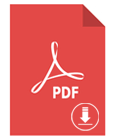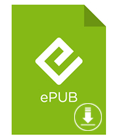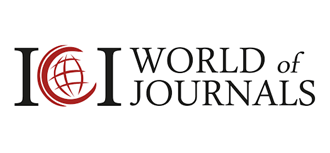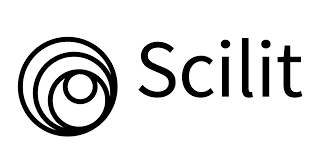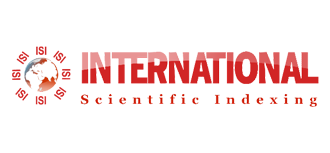Use of Liofilized Colostros and its Complementation with Igy, for the Prevention of Neonatal Diarrhes in Bovines
Aguirre EGG*1, Vázquez FF2, Ortíz GS3, Méndez MM4, Camacho RJC5, Galicia DJA6, Carlos DLLME°
1Faculty of Veterinary Medicine and Zootechnia, Benemérita Universidad Autónoma de Puebla, México.
*Student from Faculty of Veterinary Medicine and Zootechnia
Submission: September 30, 2019; Published: October 14, 2019
*Corresponding author: Aguirre EGG, Faculty of Veterinary Medicine and Zootechnia, Benemérita Universidad Autónoma de Puebla, 7.5 Carretera Cañada Morelos - El Salado Tecamachalco, Pue, México
How to cite this article: Aguirre EGG*, Vázquez FF, Ortíz GS, Méndez MM, Camacho RJC, et al. Use of Liofilized Colostros and its Complementation with Igy, for the Prevention of Neonatal Diarrhes in Bovines. Dairy and Vet Sci J. 2019; 13(5): 555878. DOI: 10.19080/JDVS.2019.13.555878
Abstract
Good colostrum management is essential to provide a good immunoglobulin load to newborn calves, thus decreasing the mortality and morbidity of animals that are breeding. Proper management of colostrum is given by the quality, quantity and timing at which it is supplied to the calf. The objective of this study was to highlight the importance of lyophilized colostrum management, which was complemented with egg yolk, for administration in neonates, thus determining the effect of bird IgY, in the prevention and control of neonatal diarrhea in Holstein Friesian dairy calves. Two treatments with 30 calves were established during the lactation period, which are located in the bovine milk production module of the zootechnical post “El Salado” belonging to the Faculty of Veterinary Medicine and Zootechnics of the Benemérita Universidad Autónoma de Puebla. México. In the control group (n = 15) it consisted of the first feeding with maternal colostrum (4L) compared to the treatment group (n = 15) lyophilized colostrum was supplied within the first 4 hours of life (4L) plus 30 grams of IgY avian immunoglobulins, from the first day of birth to 7 days of life. The reading in a refractometer was used as a variable of the transfer of passive immunity to the calves, as well as the colostrodensimeter was used to evaluate the density of colostrums of cows from the first to the sixth birth, in order to select the best quality, for subsequent freezing and lyophilization. The transfer of passive immunity in calves occurs through ingestion of colostrum, since the bovine placenta is of epitheliocorial type, which prevents the transfer of immunoglobulins (Ig) from the mother to the fetus, so that the calf is born agamaglobulinemic. In the treatment group we observed 15 calves with a plasma protein level with a range of 2.8, which has a maximum of 8.8g / dL and an average of 6.0g / dL and an average of 7.46 ± 1.1. Weaning weight, which has a maximum of 95kg and an average of 65kg and an average of 80.07 ± 8.9. As well as absence of diarrhea during the first weeks of life.
Keywords: Passive Immunity; Colostrum; Avian Immunoglobulins (IgY); Neonatal diarrhea
Introduction
Calves represent the future of dairy, meat and reproductive products as such, the critical stage is from birth to weaning that is essential for the development, health, productivity and profitability of future heifers replaced. The perinatal period is one of the most vulnerable moments in the life of the calf, and the ability to breastfeed immediately after birth prevents losses caused by diarrhea that are commonly found in the first 48 hours of life. The new concepts in colostrum management not only reinforce the importance of colostrum immune factors in the health of calves, but also emphasize it in the long term, for example the impact on intestinal, ruminal and metabolic development, as well as the impact on the endocrine state, growth, productivity and survival, since nutritional management has improved and now properly focuses on growth, and the prevention of infectious diseases. In this way, well-being, yield and future production are promoted, if young calves are housed in individual or group pens, important principles can be applied to ensure the health and well-being of calves such as IgY avian immunoglobulins, Routine health maintenance practices, preventive health detection and effective treatment protocols that must be strategically integrated into the management of young calves to optimize health, minimize stress, costs and the possibility of harm.
Colostrum is a vital biological fluid, the functions of colostrum in the optimal health of the infant, is to promote growth and development, as well as reduce mortality and the risk of gastrointestinal infections, diarrhea, colic, dehydration and even pneumonia. It is the best and cheapest tool to improve the breeding processes in calves, rich in antibodies, proteins, immunological components, and biologically active growth factors than subsequent milk, and that provide the calf with high energy, mineral power and protein; obtaining all its immunity through colostrum intake.
Colostrum is considered a totally safe substance, even with very high doses. The main functions of colostrum are to nourish the body with essential nutrients that strengthen the immune system, stimulating the immune system response, maintaining the intestinal microflora and accelerating tissue regeneration. The placenta of the bovine is of epitheliocorial type, this prevents the passage of immunoglobulins to the fetus during pregnancy so that the calf is born agamaglobulinemic, so the passage of antibodies or other proteins from the mother to the fetus is not performed at this stage, if not what happens through the colostrum route and thus be able to offer the protection that the mother fails to transfer to the offspring during pregnancy.
Colostrum is the first food of the neonate, consisting of a mixture of milk secretions and constituents of the blood, specifically immunoglobulins and other plasma proteins, which accumulate in the mammary gland during the dry and preparatory period, until the first 48 hours. After delivery, it contains more than 82 components, mainly immune factors such as immunoglobulins, lactoferrins, cytokines, cell growth factors, amino acids, minerals and vitamins, as well as other vital substances. These beneficial substances help the body to protect itself from pathogens found in the environment such as viruses, bacteria or fungi [1], which helps to protect health, such as proline-enriched polypeptides (calostrins) which help the metabolism in general [2-5].
Immunity is the body’s ability to destroy bacteria or viruses, the mechanics of an immunity response is very complex, and with the use of good quality colostrum the incidence of infectious diseases in calves is reduced. Colostrum is an excellent nutritional supplement because it has these proteins, amino acids, minerals and vitamins, its great value lies in the potential for nutrition, protection and hydration that it offers to the newborn.
Material and Methods
The realization of this work was carried out, in the “El Salado” zootechnical post, belonging to the Faculty of Veterinary Medicine and Zootechnics of the Benemérita Universidad Autonóma de Puebla during the months of February to December 2018, in the module of bovine specialized in milk production, belonging to the municipality of Tecamachalco, Puebla. The device for measuring the specific gravity of the colostrum called a colostrometer incorporates the relationship between the concentration of immunoglobulins and the specific gravity of the colostrum, considering that the one with higher concentrations is of excellent quality 80 to 150 mg / ml of Igs [6-10]. This technique estimates the density of colostrum by its specific weight, thus indirectly quantifying the level of globulins present. Colostrums of Holstein Friesian cows were used, immediately after delivery, which were collected and selected to carry out the pasteurization process in order to ensure the elimination of contaminating and pathogenic bacteria that can transmit diseases. Subsequently, these colostrums were frozen in suitable containers for their conservation and subsequent lyophilization process, thereby guaranteeing a quality and safe product that provides an adequate immunological and nutritional transfer, which will be possible to assess the healthy development of calves and calves inside of the breeding system. In stables that have herds infected with Brucellosis, using powdered or lyophilized colostrum, emerges as a necessary measure to prevent the spread of this disease and also start the path for eradication, which is significantly relevant for the care of the herd [11-15].
The study was conducted with 15 clinically healthy Holstein Friesian calves, using lyophilized colostrum together with IgY egg yolk (lyophilized) with specific immunoglobulins, which were incorporated into the calf’s feeding routine, with a dose of 30 grams per day per animal, in a duration of 7 days, in the treated group, while the control group was not added IgY, only good quality colostrum was supplied. The management of newborn calves after birth includes disinfection of the umbilical cord, accommodation in cribs, cattle ranching and the administration of good quality colostrum, within the first hours of life. 24 hours after the colostrum, the refractometer was used, which is used to measure the concentration of plasma proteins; the principle of refractometry involves passing a beam of light (environmental or artificial) through a serum sample. The device measures the amount of light deflected or refracted by blood constituents, such as proteins or solid plasma compounds. Therefore, the higher the concentration of proteins in the blood, the higher the index of light refraction in calves approximately one week old, the greatest constituent of the total protein is immunoglobulins, so the total protein by refractometry it is used to estimate passive immunity. Although the refractometry technique for measuring serum Ig is relatively simple, fresh serum without hemolysis is required [16- 18] (Table 1) (Figure 1).


Results

In the treatment group we observed 15 calves with a plasma protein level with a range of 2.8, which has a maximum of 8.8g / dL and an average of 6.0 g / dL and an average of 7.46 ± 1.1. Weaning weight, which has a maximum of 95kg and an average of 65 kg and an average of 80.07 ± 8.9 [19-23]. Table 2 shows variables with a significant relationship, between the treatment group and the control group, using the JI-square distribution test and the frequency analysis for both groups, both the T ° and the length were NOT significant, but the variables height at the cross, thoracic perimeter, birth weight, plasma protein, and weaning weight, if are significant (Table 3) (Figure 2).


These results provide evidence of offspring fed with lyophilized colostrum with a dose of more than 150-200g of IgG achieved a successful passive transfer, compared to those who only consumed maternal colostrum in addition to that lyophilized colostrum helps as a means to control Infectious disease transmission through maternal colostrum, the benefit of feeding with lyophilized colostrum for disease control has been demonstrated. The success of the freeze-dried colostrum management program of a dairy herd is established and monitored by passive immunity tests based on the individual results of each calf, thus determining the proportion of calves that fall below the target or cut-off point [24,25].
Established as the standard for the quantitative measurement of IgG1, using the measurement of total serum protein using the refractometry technique, which has been used to establish cut-off points applied for tests based on the present investigation. Tests have been described in calves less than 1 week of age with a serum protein concentration of 5.5g / dL as a cut-off point to passive transfer present in the control group, while a minimum test of 15 calves, showed a concentration of total protein in serum greater than 8.8g / dL which indicates a good management of colostrum.
Compared to conventional feeding programs, the group under treatment offers growth rates of 1.3-1.8 lb / day, compared to 1.1- 1.3 lb / day for calves fed maternal colostrum from days 0 to 60, which claims the presence of digestive disorders such as diarrhea and pneumonia. In addition to improving growth, improvement of the nutritional status of calves from 2 to 3 weeks, benefit of the immune status, reflecting on age, weight, health, and reproduction to future milk production.
Discussion and Conclusion
Lyophilized colostrum proved to be a good immune protector, equal to or better than fresh colostrum, as long as said colostrums before being processed are subjected to a density assessment that is related to the concentration of solids, mainly immunoglobulins, by use of the colostrodensimeter and even better, since its lifespan is for years, compared to frozen colostrums that last a year before being defrosted and used. It was also demonstrated that said lyophilized colostrums when supplemented with egg yolk containing the IgY immunoglobulin, the calves showed no diarrheal problems, considering that said immunoglobulin does not allow pathogenic bacteria to adhere to the intestinal mucosa forming a barrier of extra protection, compared to the animals of the control group, who came to present this problem, at least in some specimens. An important fact to mention is the fact of finding in those specimens that were subjected to said protocol of lyophilized colostrum administration plus egg yolk, it was to observe higher levels of plasma proteins when evaluating their blood with the use of the refractometer, which seems to indicate that said IgY immunoglobulin is also absorbed through the intestinal mucosa, increasing the values up to 8.8g / dL of blood at 48 hours.
The use of good quality colostrum with its complementation with egg yolk, reflect what was expressed by Pérez S.E.C; 2015, on a lower incidence of neonatal diarrhea, and the effect of local protection on the intestinal mucosa, which acts by agglutinating pathogens, preventing their adherence and favoring the opsonization and phagocytosis of these agents, as well as the neutralization of their toxins. When performing the statistical analysis of square JI, the most relevant was a plasma protein level with a range of 2.8, which has a maximum of 8.8 g / dL and an average of 6.0 g / dL and an average of 7.46 ± 1.1, on the other hand The greatest protective effect of calostral immunoglobulins in neonates corresponds to a condition of successful passive immunity, derived from the absorption of immunoglobulins during the first hours of life, in addition to preventing as far as possible the presence of diarrheal problems.
At present it is important that at the level of production units, the quality of the colostrum can be evaluated, facilitating the use of simple but reliable instruments such as the colostrodensimeter and refractometer, the precision of the instrument, the handling of the samples, the experience of the operator and the effect of external factors on the reading are factors to consider to determine the quality of colostrum in an adequate and reliable way in the herds and in this way, to make a good management of the colostrum at the level of calf rearing, avoiding the increase of the mortality that causes great losses in the production units. “A calf is more likely to survive when his mother has received good food and handling, when he comes into the world in a clean environment and in a controlled birth but especially if he receives, in his first hours of life, a high quality colostrum and in the right amount. “
References
- Baumrucker CR, Burkett AM, Magliaro-Macrina AL, Dechaw CD (2010) Colostrogenesis mass transfer of immunoglobulin G1 into colostrum. J Dairy Sci 93: 3031-3038.
- Benavides D, Elizondo JA, Gonzalez G (2013) Estado inmunológico de terneras y terneros de lechería en la región Huetar Norte de Costa Rica. Año II Agron Mesoam 24(2): 285-291.
- Bielmann V, Gillan J, Perkins NR, Skidmore AL, Godden S, et al. (2010) An evaluation of Brix refractometry instruments for measurement of colostrum quality in dairy cattle. J Dairy Sci 93(8): 3713-3721.
- Blum JW, Baumrucker CR (2008) Insulin-like growth factors (IGFs), IGF binding proteins, and other endocrine factors in milk: Role in the newborn. En: Z. Bösze (Eds.), Bioactive components of milk. Springer, NY, USA, 606: 397-422.
- Besser TE, Garmedia AE, McGuire TC, Gay CC (1985) Effect of colostral immunoglobulin G1 and immunoglobulin M concentrations on immunoglobulin absorption in calves. Journal of dairy Science 68(8): 2033-2037.
- Blattler U (2001) Feeding colostrum, its composition and feeding duration variably modify proliferation and morphology of the intestine and digestive enzyme activities of neonatal calves. Journal of Nutrition 131(4): 1256-1263.
- Blom JY (1982) The relationship between serum immunoglobulin values and incidence of respiratory disease and enteritis in calves. Nordisk Veterinaer medicine 34(7-9): 276-284.
- Brignole TJ, Stott GH (1980) Effect of suckling followed by bottle feeding colostrum on immunoglobulin absorption and calf survival. Journal of Dairy Science 63(3): 451-456.
- Devery JE, Larson BL (2002) Age and previous lactations as factors in the amount of bovine colostral immunoglobulins. J Dairy Sci 66: 221-226.
- Drackley JK (2008) Calf nutrition from birth to breeding. Veterinary Clinics of North America: Food Animal Practice 24(1): 55-86.
- Elizondo-salazar JA, Heinrichs AJ (2009) Feeding heat-treated colostrum or unheated colostrum with two different bacterial concentrations to neonatal dairy calves. Journal of Dairy Science 92(9): 4565-4571.
- Faber SN (2005) Effects of colostrum ingestión on lactational performance. Profecional Animal Scientist 21: 420-425.
- Foster DM (2006) Serum IgG and total protein concentrations in dairy calves fed two colostrum replacement products. Journal of the American Veterinary Medical Association 229(8): 1282-1285.
- Faber SN, Faber NE, McCauley TC, Axe RL (2005) Effects of colostrum ingestion on lactational performance. Prof Anim Sci 21: 420-425.
- Fleenor WA, Stott GH (1980) Hydrometer test for estimation of immunoglobulin concentration in bovine colostrum. J Dairy Sci 63(6): 973-977.
- Godden SM, Haines DM, Hagman D (2009) Improving passive transfer of immunoglobulins in calves. I: Dose effect of feeding a commercial colostrum replacer. J Dairy Sci 92(4): 1750-1757.
- Nasiri K, Zibaee S, Nassiri M, Tahmoorespur M, Haghparast A (2016) Production of specific IgY antibody to the recombinant Fan C protein produced in Escherichia coli. Iranian Journal of Basic Medical Sciences 19(8): 883-889.
- Perez SEC (2015) Efecto de inmunoglobinas IgY específicas sobre la incidencia de diarreas en becerras lecheras Holstein Friesian. Tesis de licenciatura. Médico veterinario zooctenista. Universidad Autónoma Agraria Antonio Narro. Torreon, Coahuila, p. 70.
- Quiroga Ibarra IM (2012) Evaluación de un producto en base a inmunoglobulinas específicas de huevo en la prevención de la diarrea neonatal del ternero. Tesis de Licenciatura. Médico veterinario zootecnista. Facultad de ciencias veterinarias y pecuarias escuela de ciencias veterinarias. Santiago, chile, p. 22.
- Stephani JF (2017) Citocinas e Inmunoglobulina Genética en Diarrea Neonatal. Médico Veterinario. Facultad de Medicina Veterinaria Justus Liebig University Giessen, Alemania, pp. 220.
- Tepán Pintado ER (2011) Diarrea Neonatal de los Terneros. Tesis de Licenciatura. Médico veterinario zooctenista. Facultad de ciencias agropecuarias. Escuela de Medicina Veterinaria y Zootecnia. Cuenca - Ecuador, p. 95.
- Toso RE, Neher B, Alvarez Rubianes N, Toribio MS, Boeris MA, et al. (2016) En línea: Obtención, purificación y caracterización de inmunoglobulina “Y” (IgY) específicas con fines diagnósticos y profilá 07 de diciembre de 2016, de Facultad de Ciencias Veterinarias.
- Viviana Parreño, Celia veja, Marina bok (2016) En línea: Diarreas neonatales enternero.
- Vega C, Bok M, Saif L, Fernandez F, Parreño V (2015) Egg Yolk IgY Antibodies: A Therapeutic Intervention Against Group A Rotavirus in Calves. Research in Veterinary Science 103: 1-10.
- Wattlaux M (2002) Crianza de terneras. Del nacimiento al destete (28). Importancia de alimentar con calostro. Universidad de Wisconsin-Madison. Instituto Babcock. USA.



